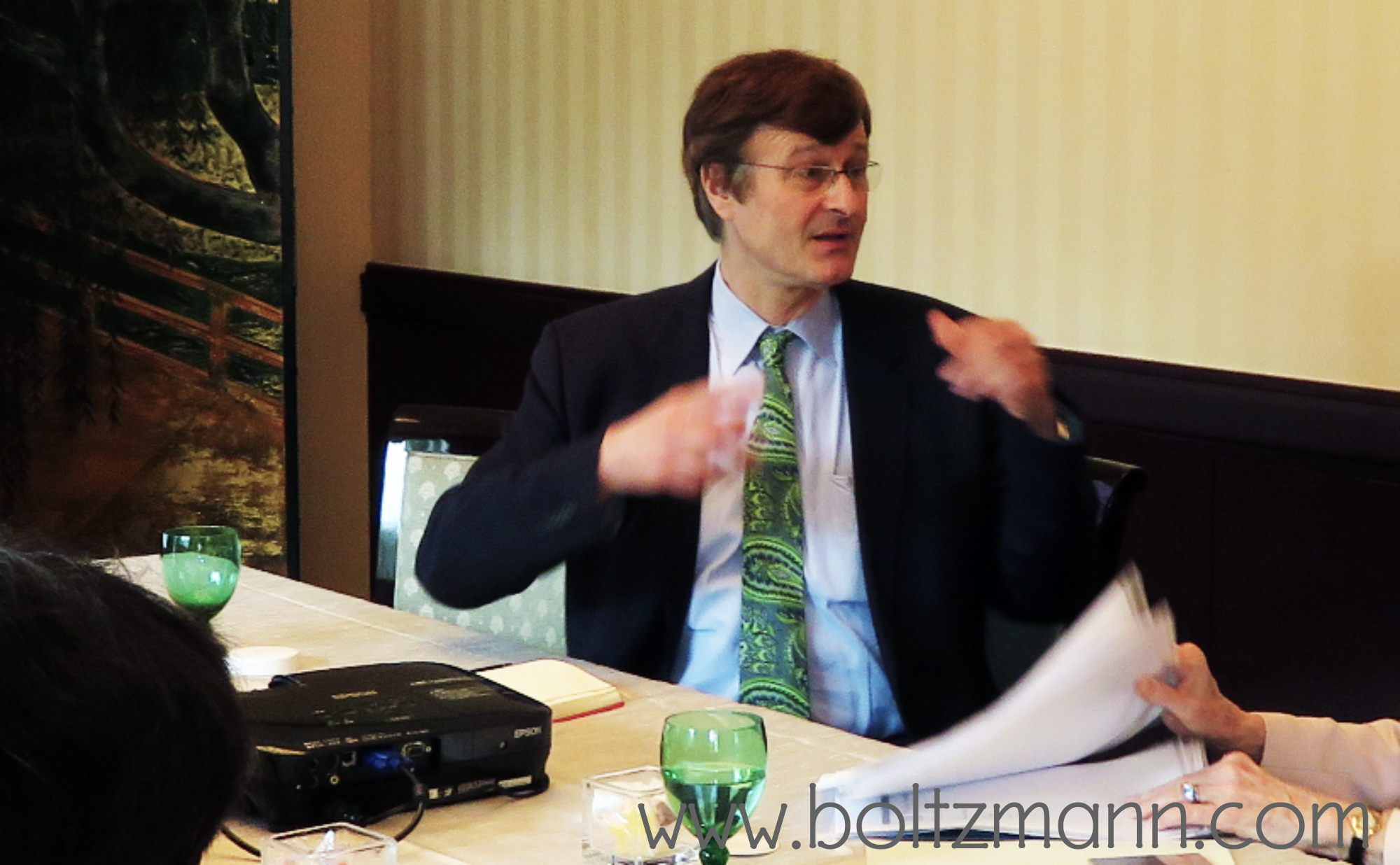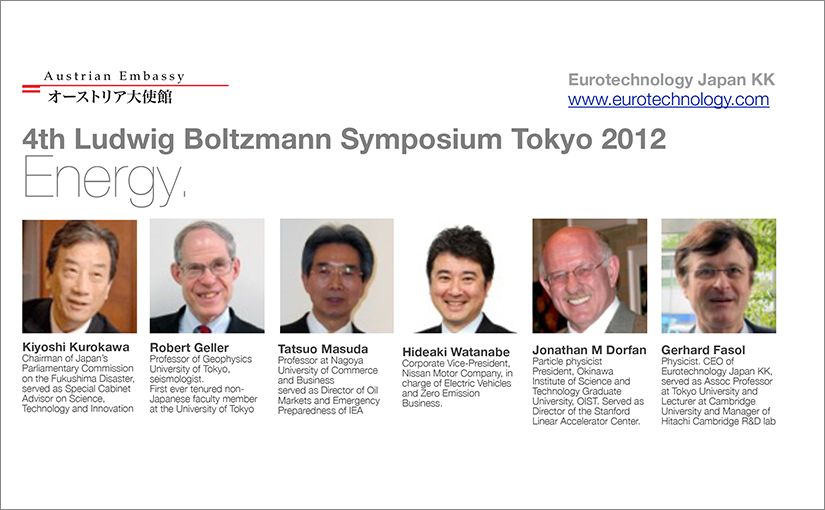Tag: Gerhard Fasol
-

Boltzmann constant, temperature and the new SI system of units by Gerhard Fasol (6th Ludwig Boltzmann Symposium)
Boltzmann constant k, “What is temperature?” and the new definition of the SI system of physical units (by Gerhard Fasol, CEO of Eurotechnology Japan KK. Served as Associate Professor of Tokyo University, Lecturer at Cambridge University, and Manger of Hitachi Cambridge R&D Lab.) Keynote presented at the 6th Ludwig Boltzmann Symposium on February 20, 2014…
-

4th Ludwig Boltzmann Symposium Tokyo (Feb 20, 2012, Embassy of Austria)
Energy 4th Ludwig Boltzmann Symposium on Energy in Tokyo. Speakers: Tatsuo Masuda, Kiyoshi Kurokawa, Hideaki Watanabe, Robert Geller, Gerhard Fasol, Jonathan Dorfan Registration: latest 15 February 2011 Further information: Peter Storer, Minister for Cultural Affairs, Embassy of Austria Summary Tatsuo Masuda: “New energy architecture for Japan” Tatsuo Masuda described how Japan’s energy strategy and policy…